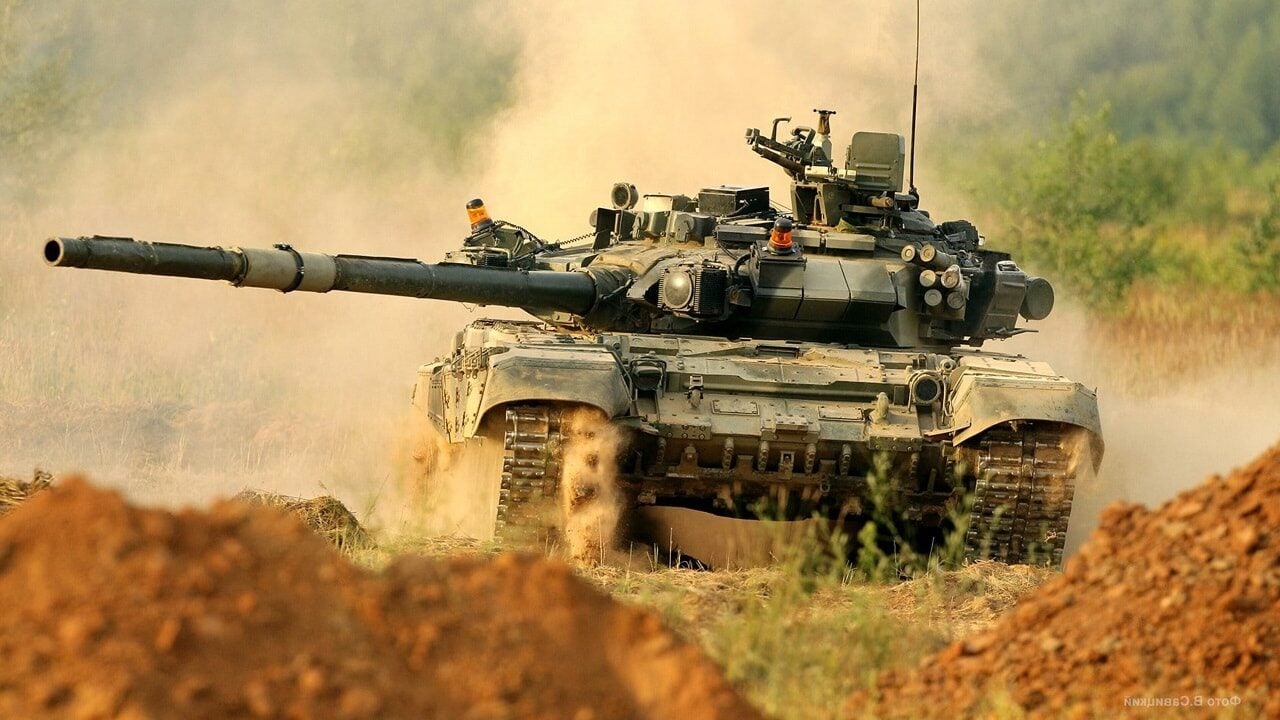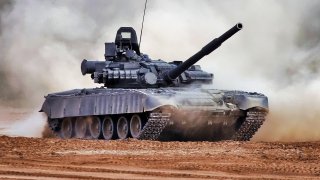'Rolling Into the Grave': Why Russia's T-80 Tank is Failing in Ukraine
The Russian T-80 tank, heavily used in the ongoing Russo-Ukrainian conflict, is struggling despite its storied Cold War origins. Derived from the T-64 and equipped with a powerful GTD-1000T turbine engine, the T-80 was designed for high mobility and rapid deployment.
Summary and Key Points on T-80 Tank: The Russian T-80 tank, heavily used in the ongoing Russo-Ukrainian conflict, is struggling despite its storied Cold War origins. Derived from the T-64 and equipped with a powerful GTD-1000T turbine engine, the T-80 was designed for high mobility and rapid deployment.
-However, its significant fuel consumption and outdated design have made it vulnerable on the modern battlefield. Since the war's onset, Russia has lost hundreds of T-80s, highlighting the tank's limitations against advanced, portable defensive systems.
-The T-80's performance underscores the challenges of relying on aging military hardware in contemporary warfare.
Why Russia's T-80 Tank is Struggling in Ukraine's Battlefields
One machine the Russians have relied upon heavily in their pursuit of more Ukrainian territory is the tank. Tanks are ideal, in theory, for sweeping across geography like the plains of Eastern Europe to secure more territory. But Russia’s use of its tank forces has not gone especially well. Thousands upon thousands of tanks have been destroyed. Many of these are outdated Cold War-era tanks inherited from the Soviet Union, like the T-80 main battle tank, which Russia has deployed heavily.
The T-80 was derived from the T-64, which was built in the 1960s. Back then, the T-64 represented the latest available technology. It had novel features like composite armor, a smoothbore gun with an autoloader, and a compact engine – features that have since become commonplace. The T-64 was a head-turner. At just 38 tons, the T-64 was light and quick, yet with the composites, still heavily armored.
The T-64 had a drawback, however: The thing was expensive and complicated. Accordingly, the Soviets were limited in their ability to mass produce the T-64, often failing to meet demand. Simpler, cheaper tanks like the T-72 were manufactured to supplement the need for high quantities of tanks. Another drawback of the T-64 was the engine. The tank’s 5TD diesel engine was notoriously unreliable.
Eventually the Soviets began considering revisions of the T-64, paying special attention to the beleaguered 5TD diesel engine. A T-64’s 5TD was swapped for the GTD-1000T multi-fuel turbine engine, which offered 1,000 horsepower. The T-64 with the GTD engine was known as the “Object 219.” While engine performance was satisfactory, the increased weight of the tank prompted a suspension redesign. The T-64 built with the GTD engine and improved suspension was designated the “Object 219-2.”
The Object 219-2 had its own drawbacks – specifically a very high fuel consumption. Nevertheless, after some controversy, the Object 219-2 prototype was approved for widescale production and redesignated as the T-80.
Introducing the T-80
The T-80’s updated engine and suspension allowed for an increased power-to-weight ratio relative to the T-64. This made the T-80 the most mobile tank in service with the Soviet Army. However, the engine consumed fuel at a rapid clip, limiting the tank’s range.

Thousands of T-80 tanks were produced before the Soviet Union collapsed – 4,839 to be exact. Russia still possesses the majority, but Ukraine absorbed their fair share of T-80s, too. The T-80 did not see much action until recently. During the Russo-Ukraine War, both sides have relied on tank warfare generally, and the T-80, specifically.
The Russians have already lost hundreds of T-80 tanks since the war began. The T-80’s survivability problems are a common theme. “[R]ussia has also sustained huge losses in equipment,” NBC reported last December, “with 2,200 tanks destroyed out of a force of 2,500 and one-third of its armored vehicles knocked out of action.”
The war has been brutal and grinding, the most vicious fighting on the European continent since the conclusion of World War II. Many of the defensive measures used in the fighting are modern and portable, so it should come as no surprise that a tank that was primarily designed in the 1970s is struggling to survive.
About the Author: Harrison Kass, Defense Expert
Harrison Kass is a defense and national security writer with over 1,300 total pieces on issues involving global affairs. An attorney, pilot, guitarist, and minor pro hockey player, Harrison joined the US Air Force as a Pilot Trainee but was medically discharged. Harrison holds a BA from Lake Forest College, a JD from the University of Oregon, and an MA from New York University. Harrison listens to Dokken.
All images are from Shutterstock and or Creative Commons.


